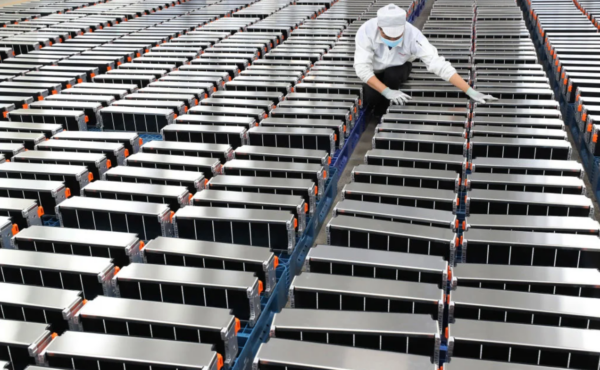
The 29-year-old researcher has won an EIT prize but is currently refining her approach.
Anna Vanderbruggen examines a tank of black bubbling liquid she created to collect graphite from obsolete lithium-ion batteries.
Vanderbruggen claimed nobody has recycled graphite, which forms 25% of batteries..
The 29-year-old researcher has won an EIT prize but is currently refining her approach.
As Europe moves from fossil fuel automobiles to electric cars, recycling graphite and other battery materials is becoming a priority.
As the region wants to reduce its dependence on China for raw supplies.
“Battery producers were not interested” in used graphite before now since “they could acquire it at low cost in China,” Vanderbruggen told AFP.
The Helmholtz Research Institute in Freiberg, Germany, technique extracts graphite from “black matter,” a powder including cobalt, nickel, lithium, and manganese.
“You put the dark mass in water and add some chemicals and air bubbles, as in a jacuzzi,” Vanderbruggen, from France, explained.

“Graphite sticks to bubbles, while metals are hydrophilic and stay in water.”
Vanderbruggen consults with companies investigating the potential of recycling electric car batteries.
High expenses and raw resource limitations have increased interest in the sector.
Philippe Barboux, a chemical professor at PSL University in Paris, says lithium prices have risen 13% in five years.
“Since it was not viable,” he continued, lithium has not been recycled widely.
The International Energy Agency predicts 350 million electric cars on the road by 2030, up from 16.5 million in 2021. (IEA).
“In 10 years, so many batteries will be created that lithium will certainly have to be recycled, else there won’t be enough,” Barboux added.
According to AFP specialists, lithium-ion battery components may now be recycled almost entirely.
Aurubis, one of Europe’s major non-ferrous metal suppliers, says its Hamburg pilot facility can recycle at least 95% of “black mass” metals.
Eramet, Umicore, and Mercedes have started comparable operations.
Most such ventures are pilots.
“It’s a tremendous expanding industry and we want to play a role in it,” said Aurubis’ head of battery materials business development Ken Nagayama, who is developing a graphite recycling technology.
He expects “adequate market supply to establish a battery recycling factory in industrial scale by the second half of the decade”.
Serge Pelissier, head of research at Gustave Eiffel University in Lyon, said there are not yet “enough batteries at the end of their life” to supply the market. Batteries typically last seven or eight years.
Car batteries come in many distinct varieties, making it hard to standardize recycling like mobile phones and computers.
Alex Keynes of the Transport and Environment NGO expects the automobile battery recycling business to peak in the “early 2030s.”
Pioneering Swedish-Norwegian joint enterprise Northvolt-Hydro aims to recycle 500,000 batteries by 2030.
Consultancies believe this would be 50% of the batteries accessible for recycling by then.
By 2031, EU batteries must include 16% recycled cobalt and 6% recycled lithium and nickel.
By 2031, it wants to recycle 70% of outdated batteries’ weight.
Vanderbruggen claimed they can achieve these standards by recovering new components like graphite.
